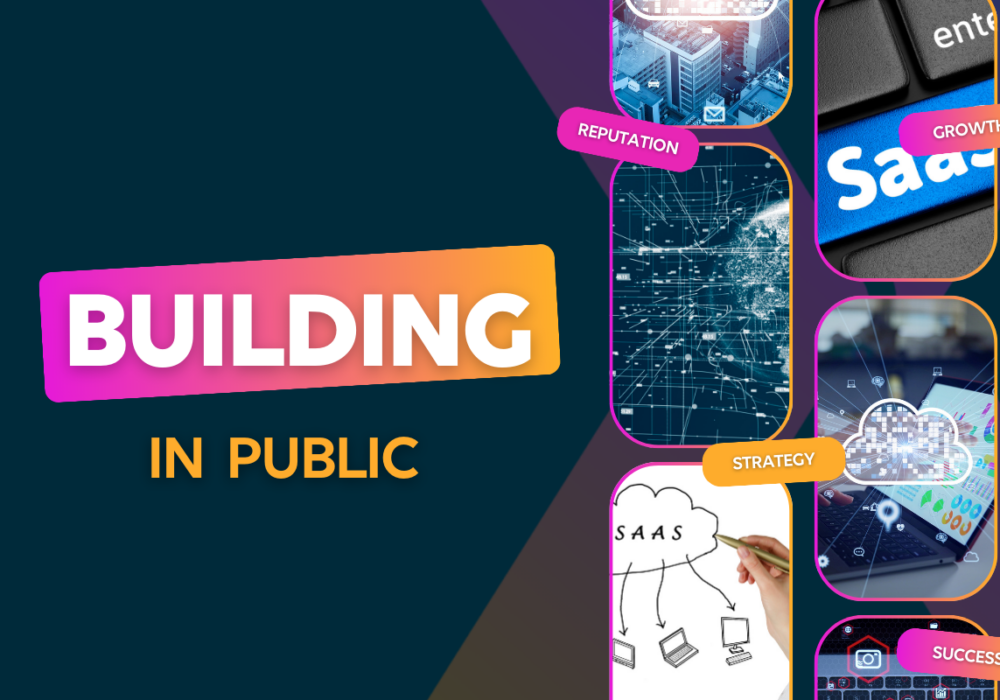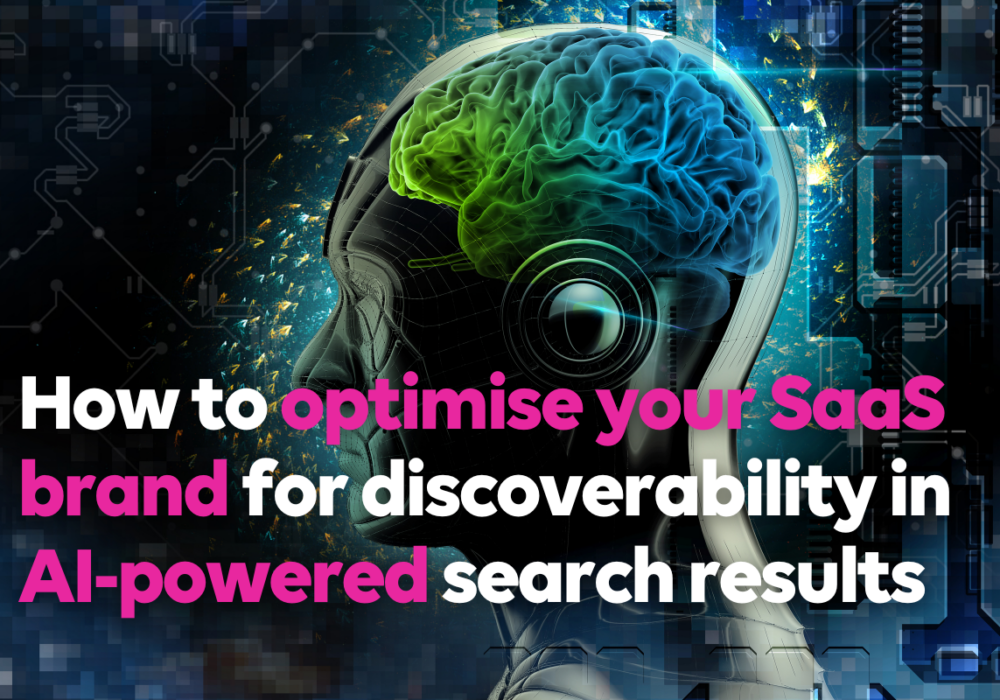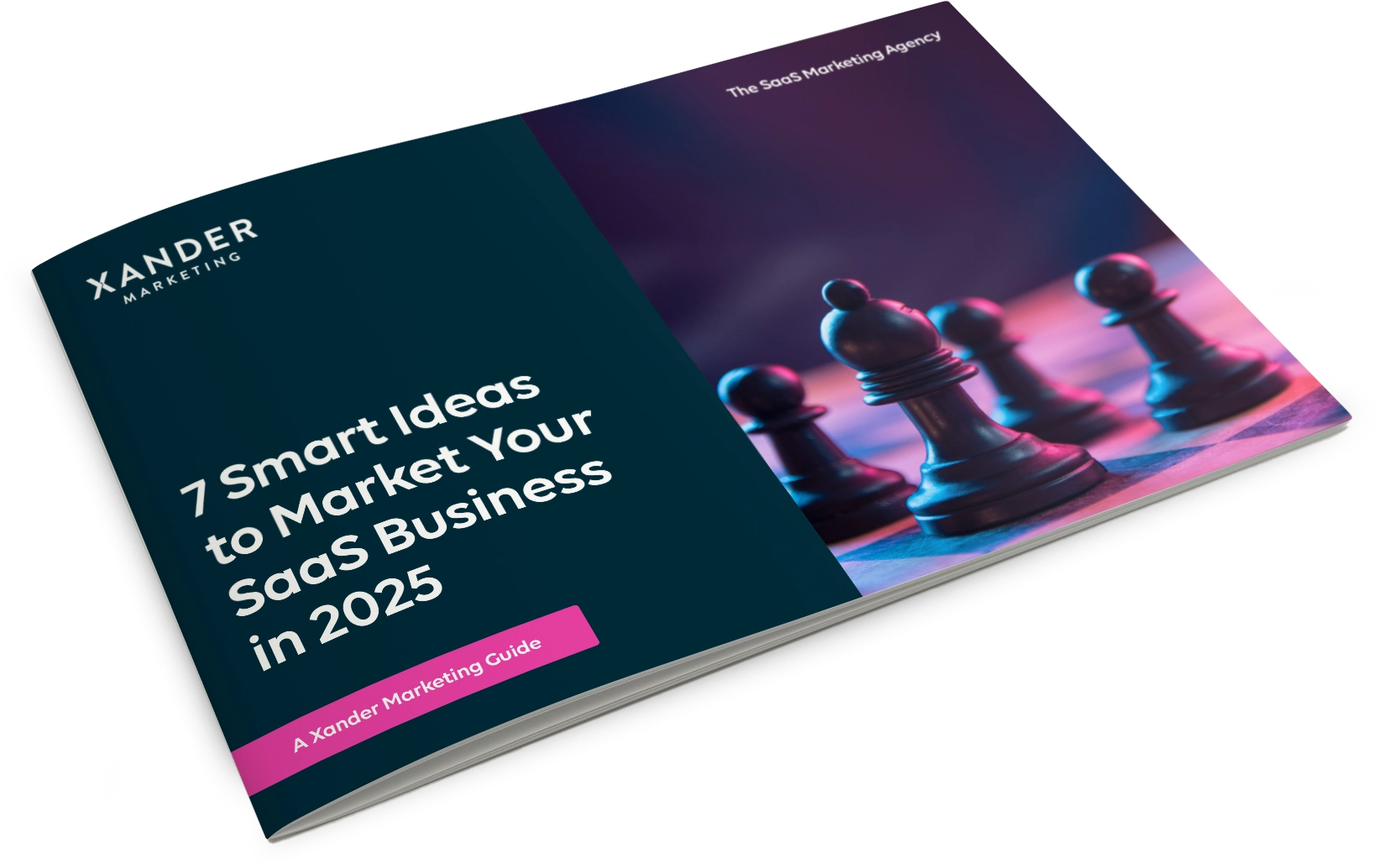What should go in your SaaS Marketing Strategy?
22nd February 2019
The ultimate guide to your SaaS Marketing Strategy
Marketing a SaaS business is just like marketing other types of business. And it’s also unlike marketing other types of business!
Common characteristics that make SaaS unlike many other businesses are they tend to be no-bricks companies, especially in the start-up and early phase of trading.
Another is the focus on the website as the ‘gravitational’ centre of the business. It needs to be the marketing hub, where prospects from different channels are driven. The single most important element of the website is conversion, either compelling website visitors to sign-up for a free trial or take up paid subscription. The site may also be a portal for subscribers to get support or access a knowledge base or accounts.
One of the reasons why it’s like marketing other businesses is that you need a masterplan in the shape of a well-developed SaaS marketing strategy.
Need help? Download your free SaaS Marketing Strategy template here.
It all flows from the business strategy
There’s a saying in business that, “if you fail to plan, you plan to fail.” Though it may sound clichéd it is an inarguable universal truth. Whether as a small start-up or international organisation, a humble online store or a multinational conglomeration, the principle remains the same: good planning delivers success.
Nowhere is effective planning more important than in the development of a good marketing strategy. But when it comes to the delivery of effective marketing, it is essential that a good business strategy has been established and can support the efforts of the marketing and sales departments.
A number of core components underpin any business strategy, providing the building blocks of precisely what and how you plan to market. After all, the absence of structure in an organisation leaves you directionless and lacking control. It is vital, therefore, that you establish the key characteristics of your business strategy at the earliest juncture, using them as the foundations on which to construct a successful marketing strategy. Your business strategy should identify:
- A clear direction of where the business is going
- The core areas of competency and how these need to develop
- How the business will solve marketplace demands and meet the needs of your target audience
- How to establish and maintain a competitive advantage
- Areas for evolution to coincide with market changes
By establishing a clearly defined strategy to support your business’ products and services, you are establishing a solid base on which to construct sales and marketing activity that complement the principles, values, and goals of your organisation.
Remember: You’re only as good as the service you offer
Advertising mogul William “Bill” Bernbach was famously quoted as saying, “The most powerful element in advertising is the truth.” Being able to promote high quality products or services is far simpler than trying to cover the flaws of a substandard asset.
This all comes down to the business strategy. You are only as good as the service you provide and the products you offer, so investing in a structured business strategy to ensure that your marketing and sales departments have something worthy of promoting makes the potential for the long-term success of the business far greater.
A company that invests time and resources into research, development and planning of its business strategy is seldom found wanting when it comes to marketing. It pays, therefore, to re-evaluate your business strategy and align it with your marketing objectives; the complementary nature of the two ultimately delivers far greater levels of success.
Masterplan sets out the objectives
The chief role of the marketing strategy is to set out the specific objectives of marketing activity.
The document contextualises the strategy in relation to the marketplace. The key marketplace factors that should be considered are:
- Target market segmentation/buyer personas – Often your product meets a need, by solving a problem. Understanding the characteristics of typical buyers helps you to figure out why they buy and how you can communicate more effectively with key messages.
- Competitor analysis – Maximising the market opportunity for your SaaS product and services is all about understanding the shape of the market, the players and any threats. A good competitor analysis feeds into critical decision making like deciding on the product roadmap, who to forge partnerships with and how best to market.
- USP (Unique sales proposition) – The USP helps to identify the attributes that differentiate the business. Along with understanding how the competition goes to market, and the preferences and behaviours of buyers. This enables a set of marketing messages to be formed that are able to set the business apart and make it standout in the marketplace.
Marketing channel activities
Another key element is discussing the tactical methodology for implementing the strategy. A marketing strategy needs to examine the specific marketing channels that the business is going to use to execute its marketing. This is likely to include:
- The website and CRO (Conversion Rate Optimisation)
- User Experience (UX) design to maximise sign-ups for trials and subscriptions
- Search Engine Optimisation and Pay Per Click. These are important drivers of traffic:
- Email marketing
- Using email to increase awareness, distribute content, promote special offers; database building/data acquisition and segmentation are also key elements
- Onboarding optimisation
- Structuring continual communication with trialists and subscribers so that they use the software; typically, with email, or it could be via the app if appropriate
- Content marketing
- Creating and distributing content that is of interest to the target market; whitepapers, guides, blogs, case studies, slide decks and infographics are all useful for driving engagement through raising awareness and projecting thought leadership
- Social/advertising/PR
- These are important channels for raising awareness and attracting people to the brand or product/service
Software requirements
There is a synergy for SaaS marketing in that much, if not all, of the software for executing the strategy is very likely to be SaaS. The typical SaaS marketing stack required is:
- Basic but effective email marketing
- Software to assemble, automate send and measure email marketing activity
- Social media
- Social media software for managing multiple networks, profiles and providing dashboards
- Marketing automation
- Software that enables multiple channels and activities to be integrated, automated, managed and measure
- Onboarding
- Software that monitors and analyses the usage of your SaaS software to help manage the onboarding process so the software ‘sticks’
Budgets and obtaining ROI
Marketing needs to be budgeted and provide demonstrable ROI. Consequently, any strategic plan for SaaS marketing needs to link the budgets to important SaaS and general marketing metrics such as:
- LTV (Customer Life Time Value)
- CAC (Customer Acquisition Cost)
- MRR (Monthly Recurring Revenue)
- ARR (Annual Recurring Revenue)
Creating a holistic SaaS marketing strategy
Now you are up to speed with the key elements that go to make up a winning SaaS marketing strategy, it’s worth considering the need to create coherence by adopting a holistic approach.
Marketing your SaaS product isn’t just a case of getting more leads or hoping customers will magically appear.
It needs to be a holistic approach focused on all stages of the marketing funnel and user journey:
Have a great product
Remember, as outlined above, first and foremost, you need a good product. If the product isn’t good enough, doesn’t add anything different to competitor products or lacks in other areas, it doesn’t matter how good the marketing is. Quite simply, you are unlikely to succeed.
Have a great onboarding process
Great, you’re generating signups to your free trial. But why aren’t they converting into customers? Here’s where a well thought through, strategic, and constantly evolving onboarding process comes into play. We’ve written about this many times before but the key questions you need to test your SaaS product with are:
- What tasks do we actually want people to undertake within the app?
- What’s the user experience like? First impressions count, so do you WOW users from first log in?
- How intuitive is it to use the software? Is the interface user friendly?
- What communication is undertaken with these leads that have signed up for the trial? (emails, phone calls, in-app messages etc.)
- How do we measure, test and improve the user experience?
If your SaaS product trial to paid subscriber conversion requires human intervention (i.e. a sales process) this needs to be frictionless and integrated with marketing.
Consider how Product Led Growth (PLG) might fit in with the tactic of free trial sign-up and conversion into paid subscription.
You may have a great product, and you need to show others just how great it is, so make sure onboarding is optimised for converting trial users into paid subscribers.
Have a high converting website
Your website is critical to success, especially with a SaaS product. Whether people land because of SEM (SEO & PPC) or WOM peer recommendation, you need to convert website visitors and generate leads through CTA response, to offers of a free trial, booking a demo, or accessing gated content.
It should go without saying that the website needs to look great, have compelling copy and be geared up for conversions.
Once you have this website in place you should continually be undertaking conversion rate optimisation.
NOW it’s time… Marketing Day #1!
You are now absolutely ready to execute the strategic marketing plan you created at the outset.
Marketing is likely to include, but isn’t limited to: Search, Content, Email, Advertising/PR and Social. Also make sure you utilise SaaS specific tactics like SaaS directories and getting on the radar of influential reviewers.
Many companies, or even many agencies commence marketing before this point. But with key elements not fully formed and properly integrated you are flying by the seat of your pants. This can make for a disappointing customer experience.
Perhaps the objective might be to create anticipation and drive excitement and expectation?
It’s like the release date for a great new movie. The critic reviews are sensational. And it’s going to be filling cinemas and movie houses from 27 July. But SaaS is not the movie business.
Without a great product, onboarding process and high converting website in place and fully functioning cohesively from Marketing Day #1, you are going to severely hamper your efforts and waste money.
Like a jigsaw, only with moving parts… get them working together!
Whilst product development is usually out of the hands of the marketing team, the marketing tactics (lead generation, brand building etc.), website and onboarding should all be in the domain of marketing and these moving parts must complement each other and work together.
You’re only as good as the weakest part of your funnel. If you have a great website but a poor onboarding process, you’ll get leads, but you won’t maximise customer conversion. If you struggle to drive traffic to your landing pages, it doesn’t matter how good your website, onboarding or product is…
Update to make sure your SaaS marketing strategy delivers ROI
Technology, channels and trends are constantly changing so it is important to continually review your marketing and make sure you update your strategy to reflect such changes. At the very least, an annual review should be undertaken to ensure SaaS businesses maximise the effectiveness and value returned to the business from marketing budgets.
Download your free SaaS Marketing Strategy template here.
A strategy-led end to end outsourced marketing solution with Xander Marketing
Different businesses will do the above in different ways. Since 2009 Xander Marketing has been undertaking all parts of this process for SaaS businesses around the globe helping them increase customers, leads, website traffic and build their brands.
Developing an effective marketing strategy for your business takes time and energy, both of which are often in short supply.
If you want to work with an agency that develops strategic plans, understands the full funnel and delivers high quality marketing to support your business objectives then simply request a free consultation with us.
Click here to book your free SaaS marketing consultation and join up your marketing.





